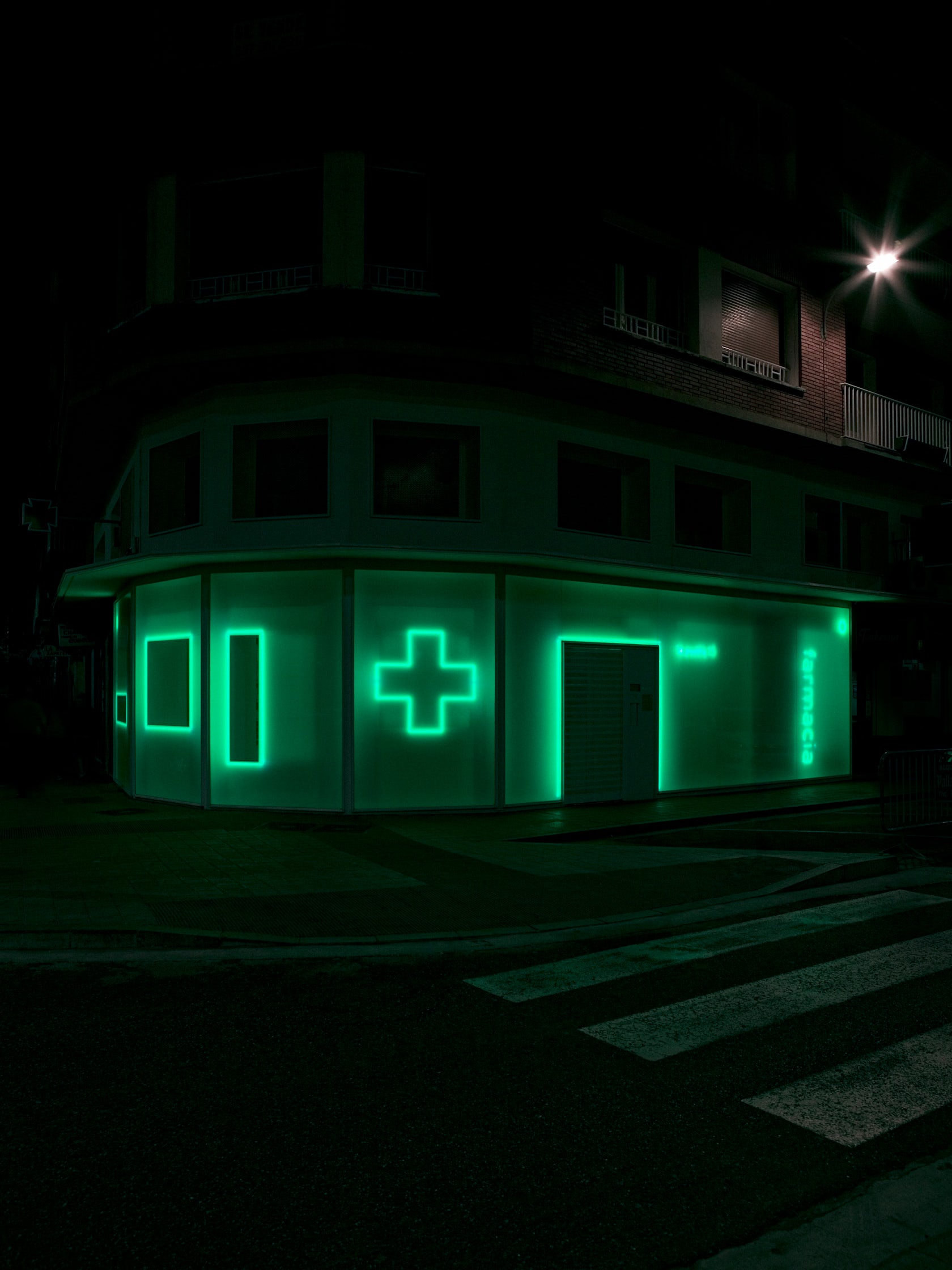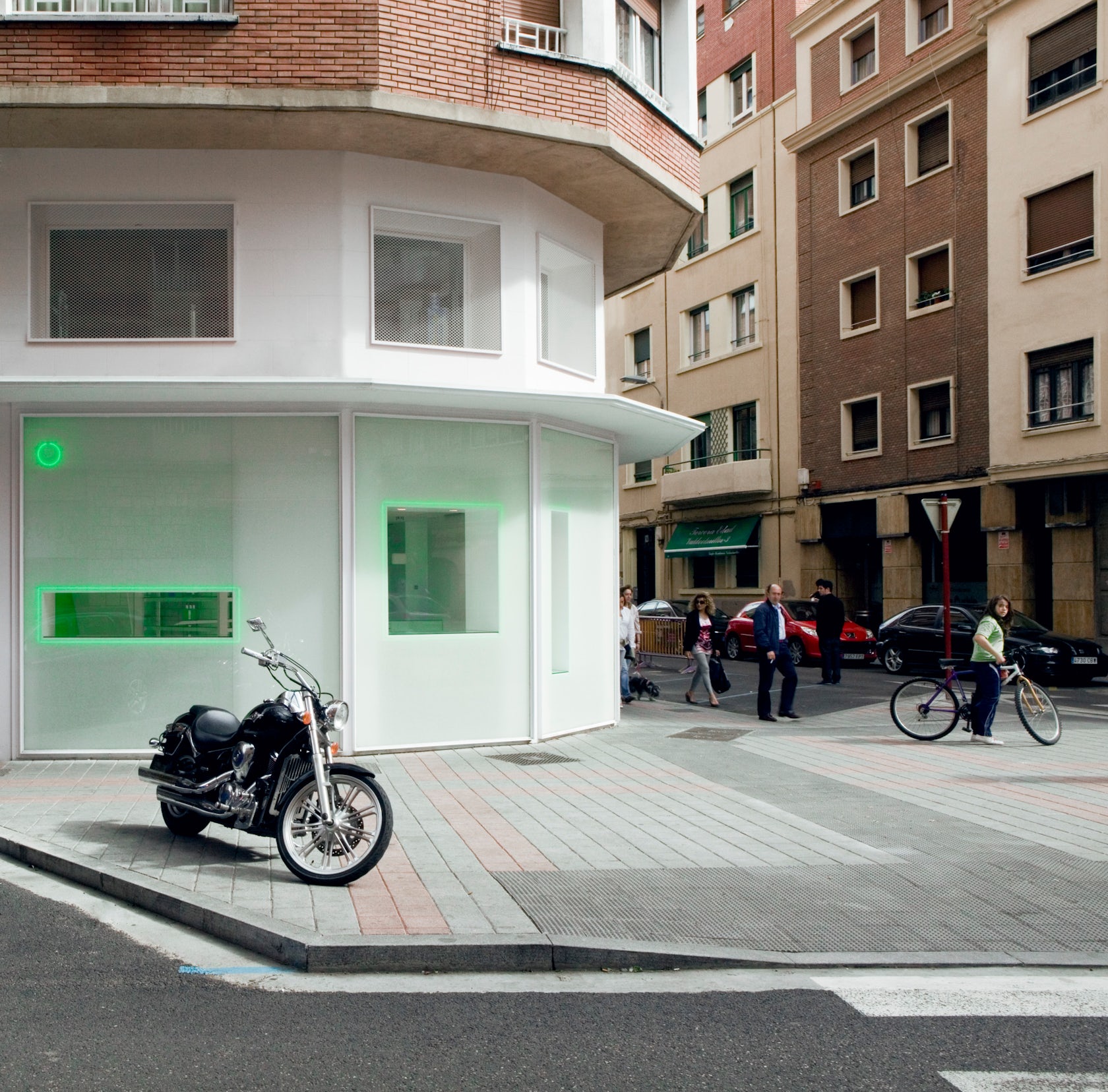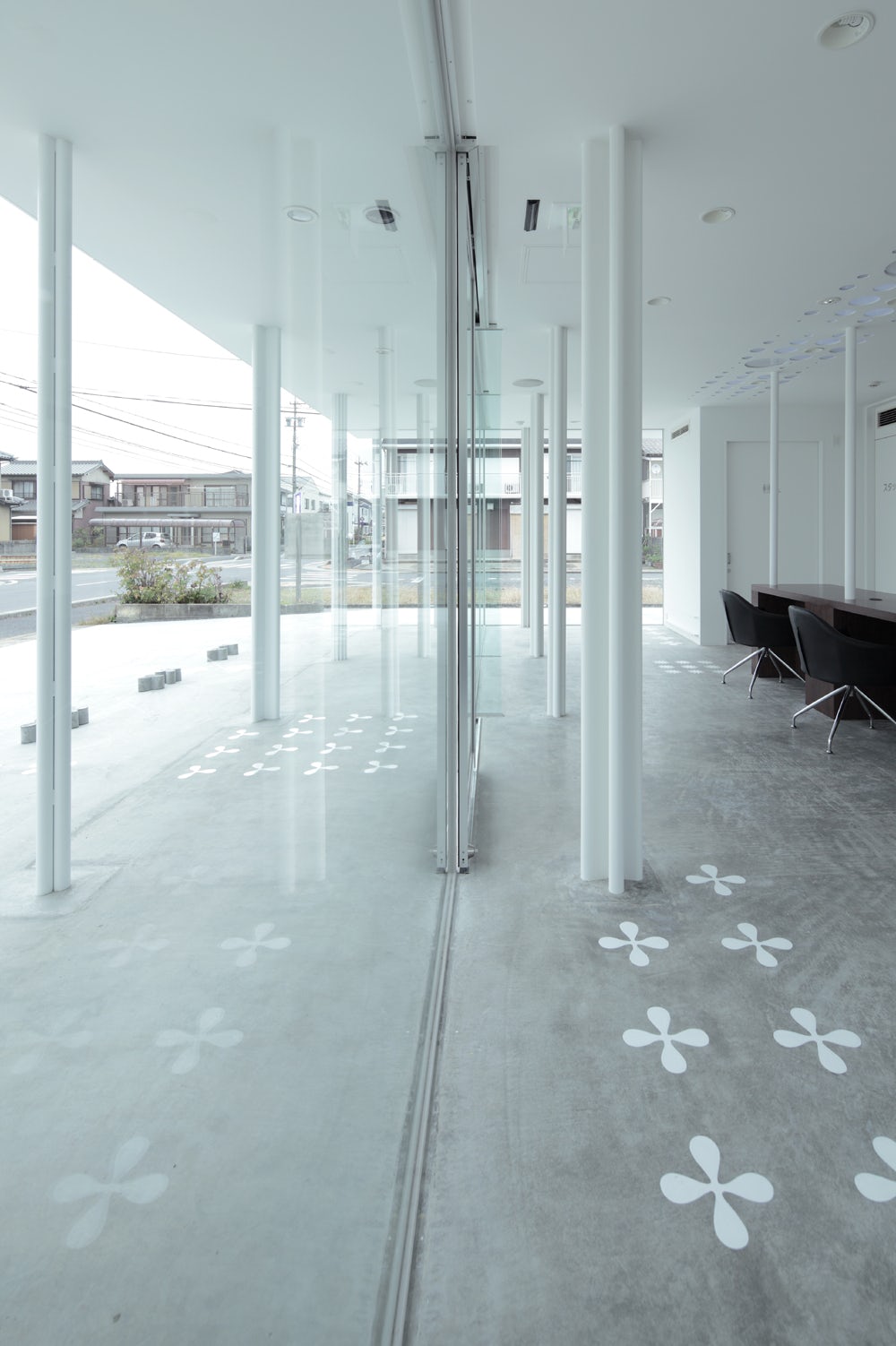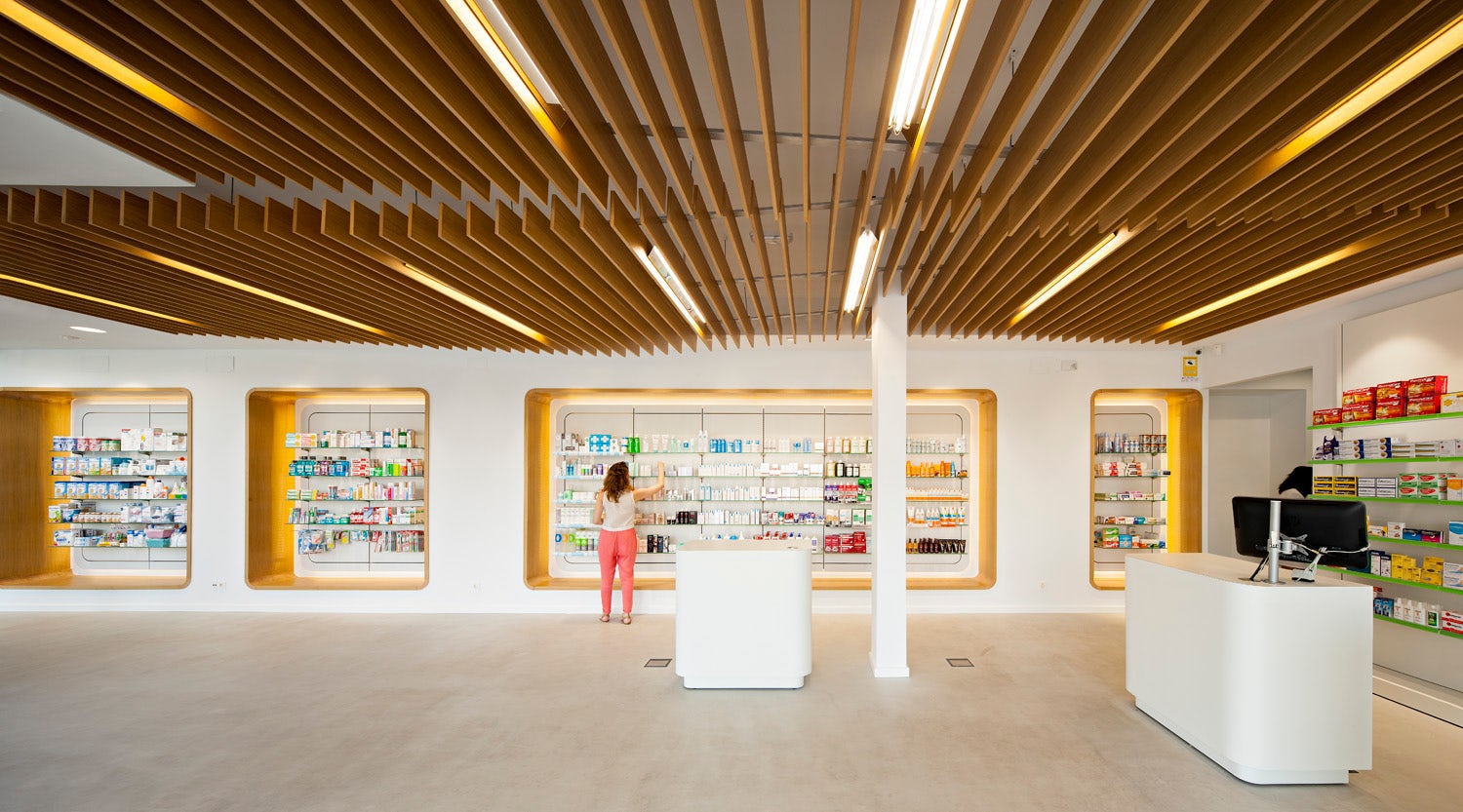Under most circumstances, you’ll find yourself waiting to fill your prescription in the basement of some big-name drugstore. Longing for natural light, you may find yourself wondering why. Perhaps for security purposes? Maybe natural light taints whatever is being dispensed? Whatever the reason, it remains an unsolved mystery.
One of the ways architects have fashioned pharmacies into more inviting and likable environments is by bringing them out of the basement and into the light. Via introducing glass-faced façades, the projects in this collection explore how introducing an open layout and a glass wall can make the trip to the pharmacy a luminous experiential journey.
© id inc.

© id inc.

© id inc.
SUMIYOSHIDO kampo lounge, clinic for acupuncture and moxibustion by id inc., Aichi, Japan
Creating a herbal ambience in mint green, this clinic for acupuncture and moxibustion is furnished with many drawers that are filled with medicine, and also a history and deep knowledge of their contents. As such, the boxes are lined and stacked handsomely in such a way that displays samples with their aromas and textures.

© Clavel Arquitectos

© Clavel Arquitectos

© Clavel Arquitectos
Casanueva’s Pharmacy by Clavel Arquitectos, Murcia, Spain
The entrance of this pharmacy is located through a door beneath the letter ‘F’within the 3D text of the word “Farmacia,” which takes up the space of two floors within the glass façade. Inside, the design incorporates just two colors: chemist’s green for the floor and the ceiling, and white for the furniture and the frontage.

© Sergio Mannino Studio

© Sergio Mannino Studio

© Sergio Mannino Studio
Careland Pharmacy Design by Sergio Mannino Studio, Brooklyn, New York
Branded with bright green furniture and graphics, Careland Pharmacy was designed with the approach of a constant juxtaposition of ideas. Providing warmth and playfulness, the high gloss shelves and sharp furniture are complemented by a soft and sensual curve created by the 70 linear feet of the undulating storage system.

© ninkipen!

© ninkipen!

© ninkipen!
Ogimachi Global Dispensing Pharmacy by ninkipen!, Osaka, Japan
Flanked by surrounding multi-story buildings, this long and slender health facility resides on a plot that once served as a farm road before a small house was built and removed. By taking on the silhouette of a humble shack, the design is intended to maintain the site’s historical context.

© klab architecture

© klab architecture

© klab architecture
Placebo Pharmacy by klab architecture, Athens, Greece
Situated on the longest and busiest avenues of the area, this cylindrical structure features a white façade perforated with braille. The spiraling exterior is a stylistic trope that carries into the interior, where a curved ramp connects the ground floor to the upper level. Branching out from a central point, the products follow the same centrifugal force of the design.

© buj+colón arquitectos

© buj+colón arquitectos

© buj+colón arquitectos
Pharmacy at La Puebla 15 by buj+colón arquitectos, Palencia, Spain
Emanating from inside out in a futuristic neon light, the new pharmacy breaks from the common practice of over-the-counter interaction, placing the medication alongside the consumer on transparent floating shelves. Sunken in the façade, deep pockets of shop windows are created through the use of solids and voids.

© SpaceSpace

© SpaceSpace

© SpaceSpace
Isoyama Dispensing Pharmacy by SpaceSpace, Mie Prefecture, Japan
Amply set back from the street, the pavilion-like structure houses a dispensary with a transparent glass face. The intuitive layout is guided by a series of slim pillars that provide support for an extended roof slab while maintaining undisrupted sight lines to the activities within.

© Ariasrecalde Taller de Arquitectura

© Ariasrecalde Taller de Arquitectura

© Ariasrecalde Taller de Arquitectura
Pharmacy El Puente by Ariasrecalde Taller de Arquitectura, Granada, Spain
Located in a former ham storage warehouse, the design of this establishment was centralized around including innovative ways of reconsidering the relationship between the client and the pharmaceutical dispatch. Leaving behind the traditional static display of products, the glass façade reveals the interior space where the color arrangement of the products defines the pharmacy’s logo.

© Takumi Ota Photography

© Takumi Ota Photography

© Takumi Ota Photography
Pharmacy in Omori by MAMM DESIGN, Toyko, Japan
Featuring a distinguished glass façade, this Pharmacy in Omori is mainly formed of two elements: a glass partition and a triple-vaulted ceiling. The glass partition in the middle of the pharmacy separates the front and back, creating a barrier between the customer’s zone and the dispensing zone. Beneath the three-vaulted shape that gently indicates reception, patients can comfortably relax in the waiting space.

© Mobil M

© Mobil M

© Mobil M
Caparrós y Reina Pharmacy by Mobil M, Bilbao, Spain
The interior space of this pharmacy was inspired by the children’s game pick-up sticks, where light wood sticks thrown at random would leave their mark all over the store. Inside the white volume, the wooden lines suspended from the ceiling create the ‘pick-up sticks effect,’ dividing the different spaces.




